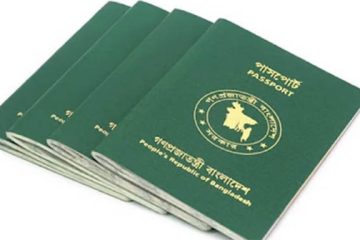Salinity due to the adverse impacts of climate change has already affected around 10.56 lakh out of 16.89 lakh hectares of land in the coastal region of the country.
Soil scientists disclosed this at the inaugural session of an annual technical workshop, organized by Soil Resource Development Institute (SRDI), in the auditorium of Bangladesh Agricultural Research Institute (BARC) here on saturday.
Quoting a recent SRDI study on ‘salinity survey and salinity monitoring programme’ that was released in June, they said
the country had 8.33 lakh hectare saline-hit area in the coastal region in 1973 but it rose to 10.20 lakh hectares in 2000.
In 2009, the salinity has increased to 10.56 lakh hectares of land from the earlier 10.20 lakh hectares which means salinity has constantly affected 35,510 hectares of land during the last nine years, said the study.
Director General of Department of Agricultural Extension (DAE) M Sayeed Ali attended the function as the chief guest and Member-Director of Bangladesh Agricultural Research Council (BARC) Dr Sheikh Gulam Hussain as the special guest. Director of SRDI Mainul Ahsan was in the chair.
The study said that new areas in Satkhira, Patuakhali, Barguna, Barisal, Jhalakathi, Pirojpur, Jessore, Narail, Gopalganj and Madaripur districts are being affected by different degrees of salinity.
Very slight to strong soil salinity, perennial waterlogging due to inadequate drainage facilities, scarcity of quality irrigation water during dry season, moderately deep flooding in monsoon season and flash flood have been identified as the major constraints for agricultural development in the coastal area, the study pointed out.
Prolonged artificial waterlogging with saline water for aquaculture, existence of toxic potential acid sulphate in soil and cyclone and tidal bore are the other major factors that are affecting agriculture.
Regarding the initiative to develop agricultural production in the southern region, M Sayeed Ali said the government already has taken a measure to disseminate stress-tolerant rice variety in the region for increasing production.
The meeting also discussed the challenges of agriculture including supply of adequate quality seeds, nutrient deficiency in the soil and disproportionate use of fertilizer that are barriers to increasing the overall agricultural production.




















